Under the rising sun on October 18, 2024, a group of 37 dedicated individuals, including R.O.L.E. Foundation staff, Bali WISE students, and interns, gathered at the beach for a focused cleanup effort. The night before had brought a massive high tide, washing a considerable amount of waste onto the shore. This unique circumstance made the morning’s work especially urgent and impactful.
By the end of the cleanup, the team had collected an impressive 729.45 kilograms of waste. The most alarming find was the significant presence of ghost nets, which made up 58.7% of the total waste. These abandoned fishing nets are particularly harmful to marine life, making their removal essential to protecting the local ecosystem.
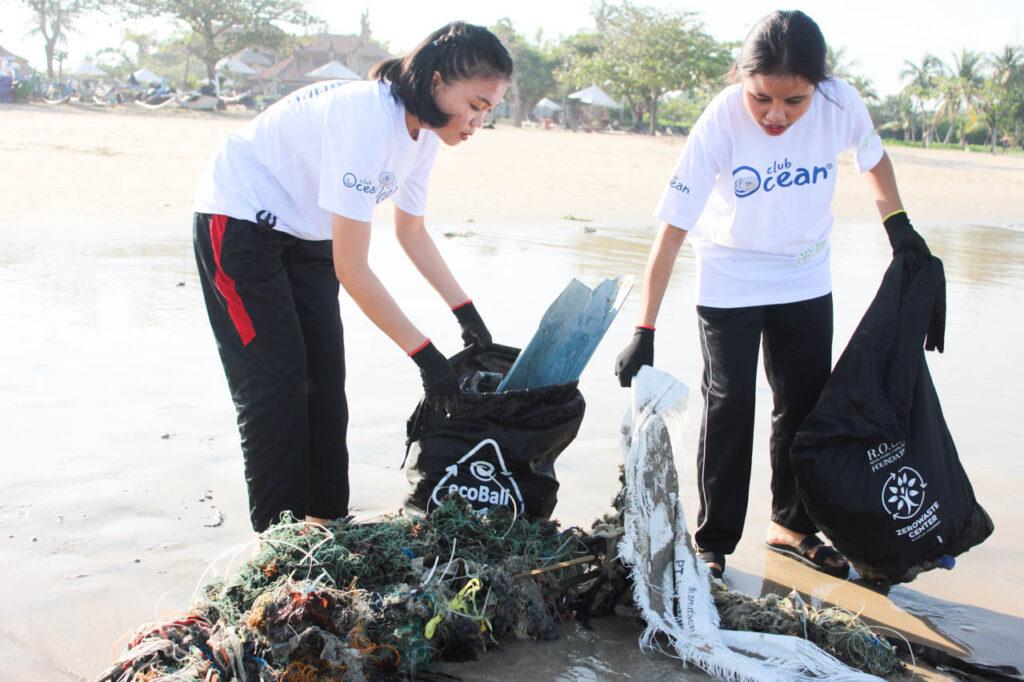
Thanks to our generous sponsors, Club Ocean and Think Ocean, whose unwavering support made this initiative possible. Their dedication to preserving our coastlines continues to inspire and drive these crucial efforts forward.
This event not only highlighted the environmental challenges posed by ocean tides but also strengthened the sense of community. The shared efforts of volunteers, from students to staff and sponsors, showed how collaboration within the community can lead to meaningful change. Together, they restored the beach’s beauty, proving that when a community unites, it can address even the most pressing environmental issues.
Location and Condition of Queen Beach
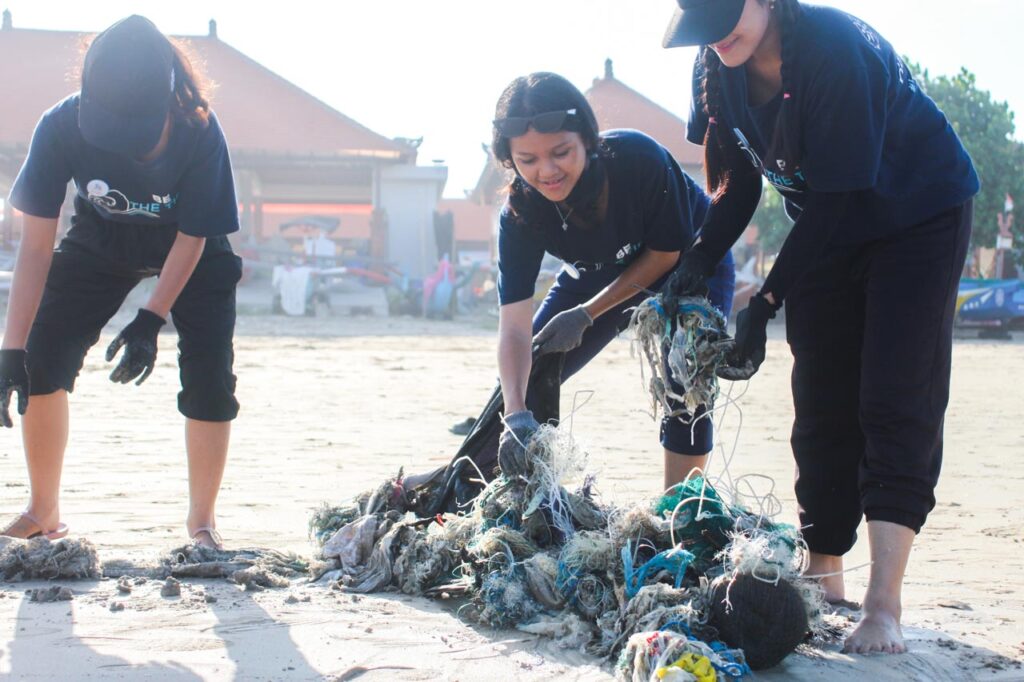
Queen Beach, part of Jimbaran Village, is a beloved spot for both local and international tourists who flock to enjoy its famous seafood and breathtaking sunsets. In the mornings, the beach also sees a steady stream of visitors taking peaceful walks along the shore, making it a popular destination throughout the day.
However, Queen Beach faces unique waste management challenges due to its location. Sandwiched between two fisherman boat parking areas, the beach often accumulates debris, particularly ghost nets, which are commonly found in these areas. These abandoned fishing nets are not only hazardous to marine life but also difficult to remove. The presence of the fisherman boat parking areas further exacerbates the issue, as waste tends to accumulate in these zones. Additionally, high tides frequently wash debris onto the shore, spreading it across the beach and making cleanup efforts even more challenging.
Efforts to maintain Queen Beach go beyond simply removing waste; they aim to cultivate a deeper sense of environmental stewardship among beachgoers and the local community. By addressing these issues, we hope to protect the beach’s appeal and ensure that it remains a clean and welcoming destination for everyone.
Waste Collection and Separation
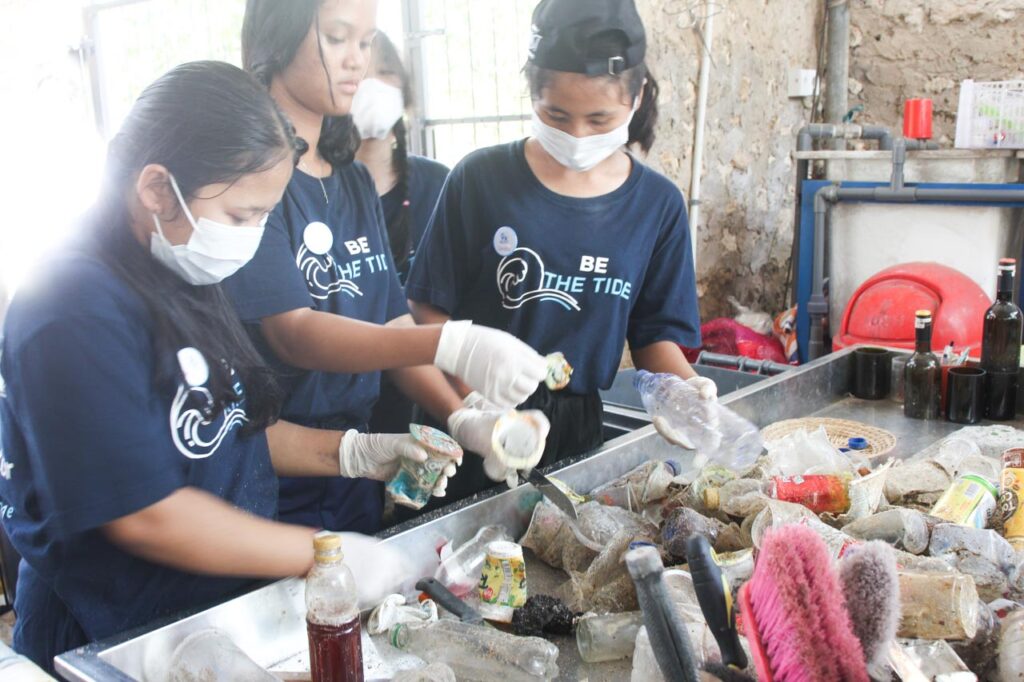
The cleanup event at Queen Beach resulted in the collection of an astounding 729.45 kilograms of waste by 37 participants. A significant portion of this was ghost nets, which made up 461.34 kilograms of the total waste. The sheer amount of ghost nets found is alarming, as such debris in the ocean poses a serious threat to marine life, entangling and often killing sea creatures. Imagine how much ghost nets are in the ocean if we can collect over 400 kilograms from just one beach cleanup; it’s heartbreaking to consider how many sea creatures may have died as a result. This event served as a stark reminder of the dangers these nets present to the local ecosystem.
In addition to the ghost nets, glass bottles were another major contributor, accounting for 7.7% of the total waste, or 60.55 kilograms. These included both clear and colored bottles, further highlighting Queen Beach’s role as a culinary hotspot for tourists who come to enjoy the local seafood and scenic sunsets. The presence of these bottles underlines the need for better waste management practices in tourist areas.
On a positive note, the percentage of residue was the lowest recorded this year, at just 17%. This is a promising sign that the cleanup efforts are yielding more recyclable materials, particularly plastics, offering hope for better waste separation and recycling in the future. This cleanup not only removed harmful waste but also provided valuable insights into the types of debris impacting Queen Beach, reinforcing the need for continued environmental action to preserve this beautiful destination.
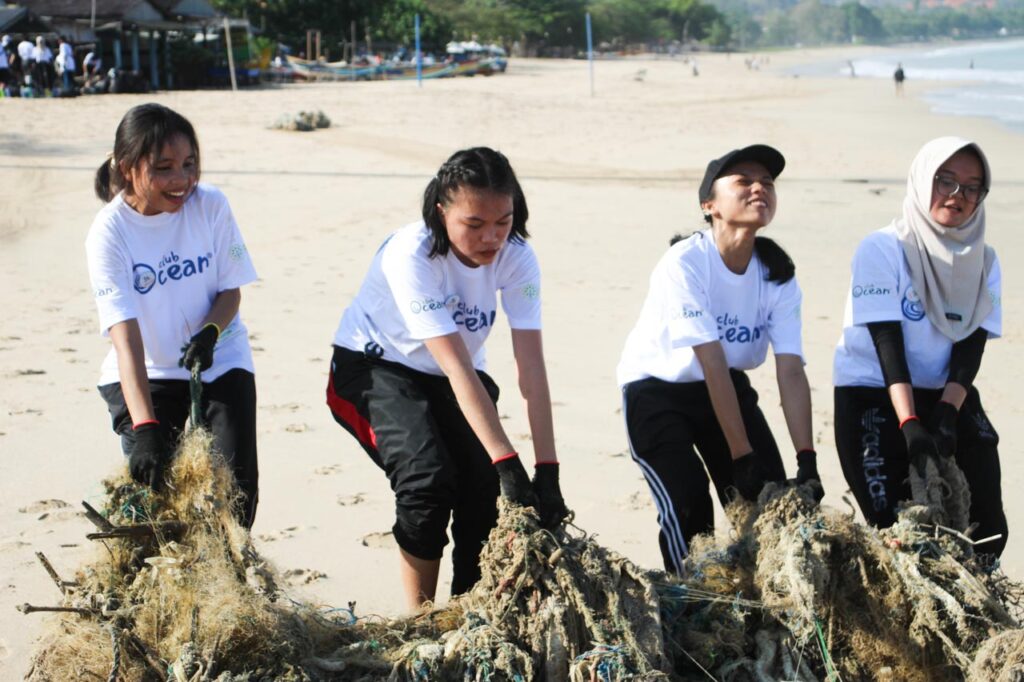

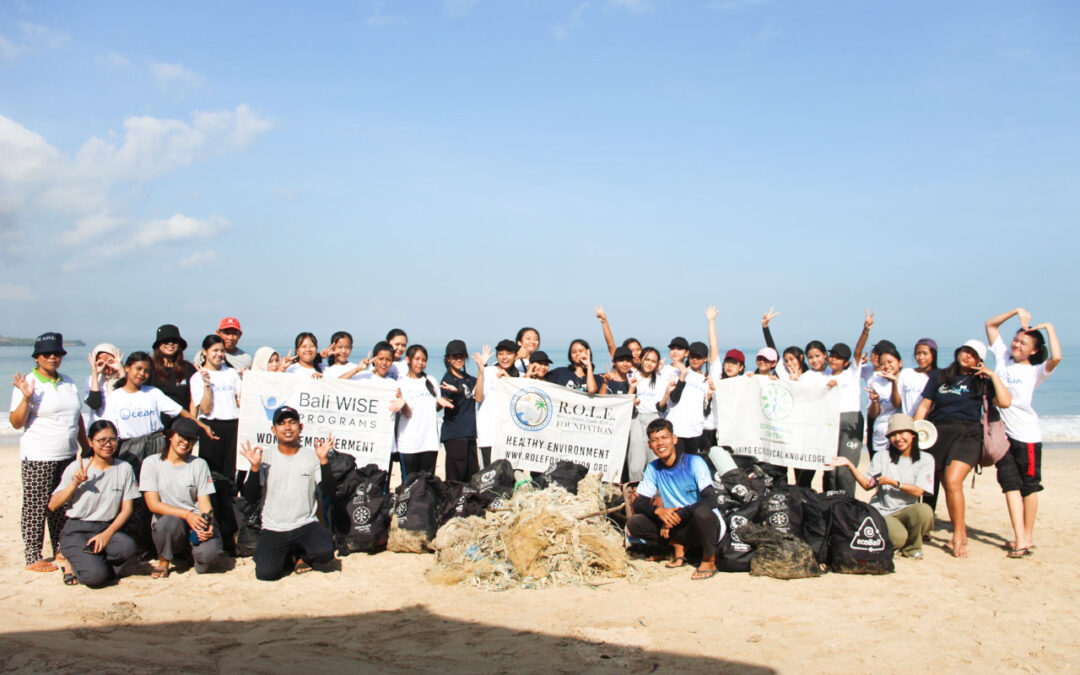
Recent Comments